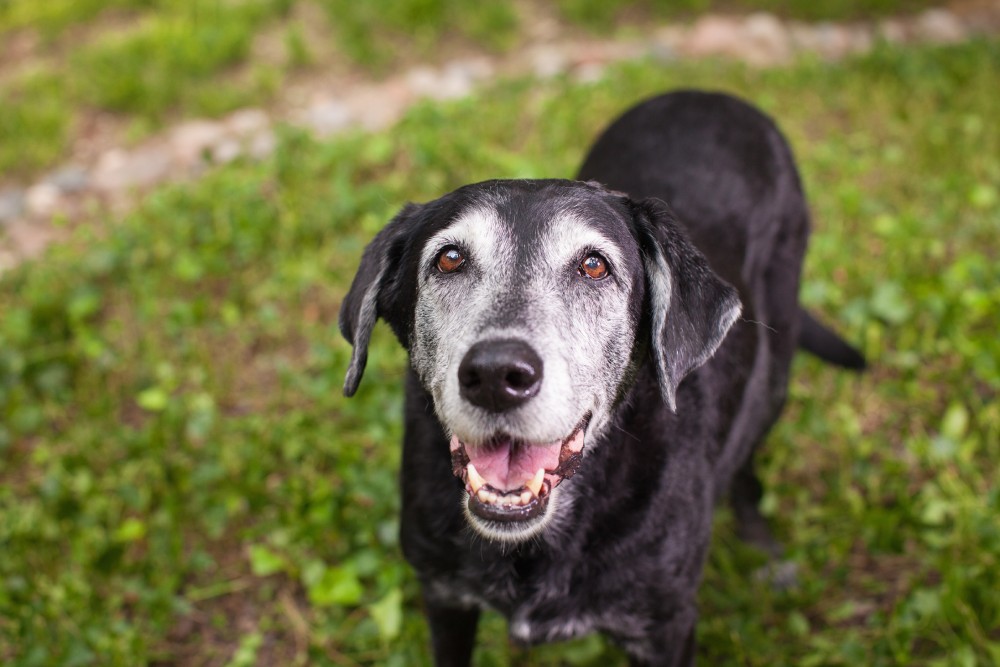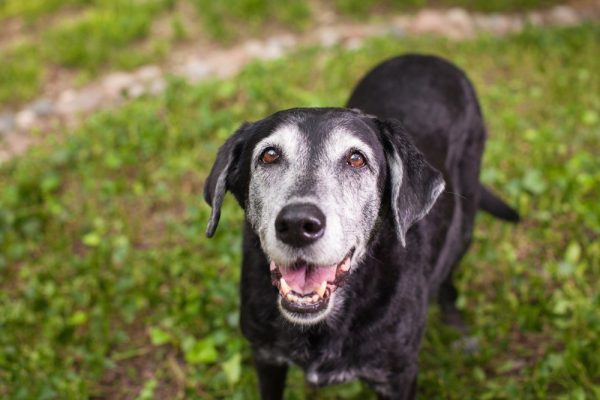Click to Skip Ahead
A fairly common saying in veterinary medicine is that “age is not a disease.” Despite this sentiment, some dog owners may be concerned about their aging canine undergoing anesthesia for dental work.
While there is always some element of risk with anesthesia, and even some potential additional anesthetic risk with older dogs, we will explore why this does not always mean that they should not be considered for the procedure.
Rather, understanding canine dental work and its importance, learning about anesthetic risks and potential precautions for senior dogs, and determining the risk versus reward while considering the individual health of the pet should be addressed. Read on to find out more!

Dental Work and Its Importance
Dental work is a generic term but often implies work done on the teeth, but veterinary dentistry also encompasses oral (relating to the mouth) medicine and surgery. Care within the mouth can encompass many things such as removing dental tartar, extraction (removal) of an infected tooth, restorative procedures (for example, a root canal), mass removal, etc.
Depending on what is being done, these may be completed by a general practitioner veterinarian in combination with their trained team members or, in some cases, a board-certified veterinary dentist.
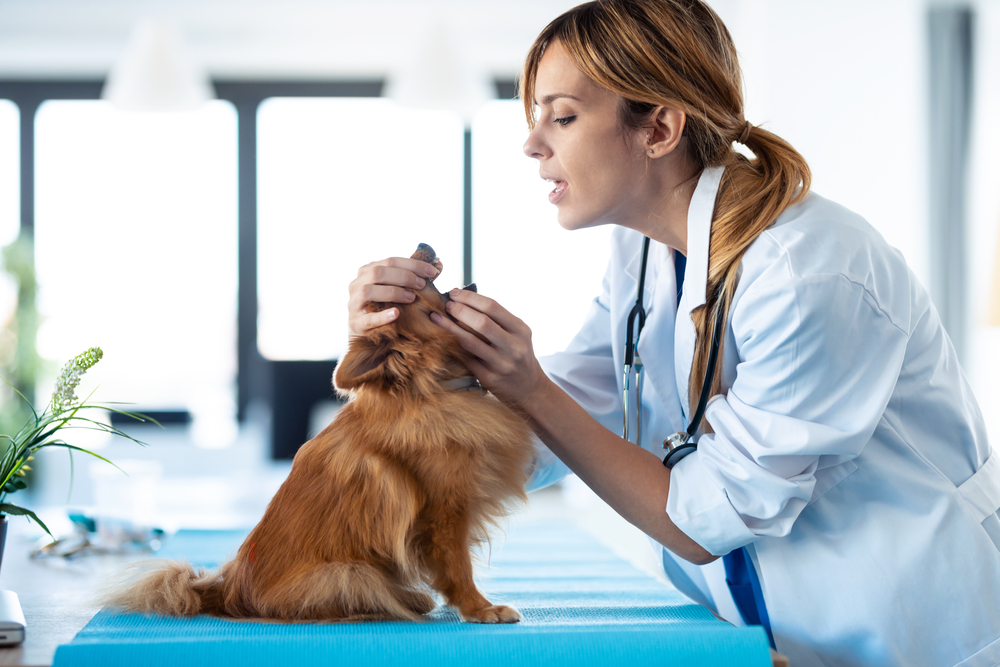
Comprehensive Oral Health Assessment and Treatment
While those referring to their dog getting annual dental work may describe it as a “dental cleaning,” a COHAT (comprehensive oral health assessment and treatment) is a much more descriptive term that explains the process is much more than “just a dental!” A brief description is that it allows for very thorough care of the mouth through numerous steps.
This begins with obtaining a history and conducting a physical exam, completing pre-anesthetic lab work, starting an intravenous catheter, and involving general anesthesia. This then allows for detailed evaluation, probing, and recording of everything inside the oral cavity, including but not limited to, the teeth. Because up to 60% of the tooth is not visible to the naked eye, full-mouth dental radiographs are imperative. Then, scaling mineralized deposits on the tooth, above and below the gumline makes way for any approved treatment (for example, tooth extraction or a root canal) that may be needed. Finally, polishing the teeth and providing the final steps such as placing a fluoride sealant on the teeth, end the procedure. Post-anesthesia, the findings, medications, and any other recommendations will be discussed.
The Importance of Dental Work
Overall, dental work is extremely important for the health of our four-legged friends! Can you imagine what a person’s mouth would be like without routine daily dental brushing and visits to the dentist? Now imagine that same scenario for your dog! Dental disease, when left untreated, can negatively affect a dog’s overall health; inflammation and infection in the mouth can even lead to pain and additional health issues elsewhere in the body, which can negatively affect their quality of life and alter their overall behavior.
In addition to wreaking havoc in the mouth, bacteria from there can move throughout the body and cause additional infections, such as in the heart or kidneys.
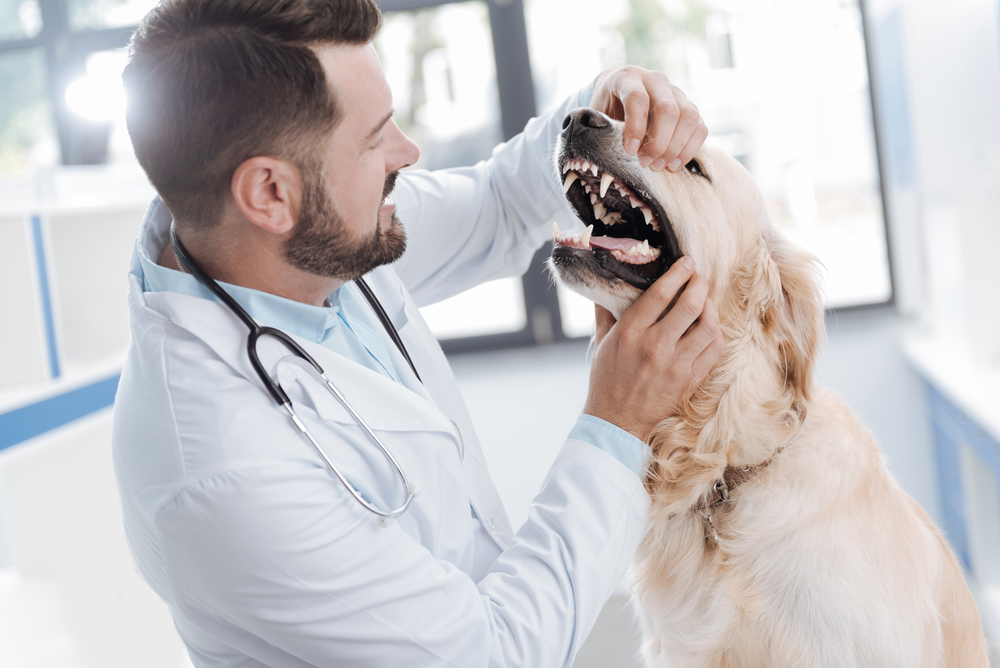
Anesthesia
So, how do veterinarians complete dental work on dogs? The answer is general anesthesia. This is a type of anesthesia that uses anesthetic drugs to result in full unconsciousness by suppressing the central nervous system. In addition, it allows for amnesia of the process, immobility with muscle relaxation, and a loss of any sensation, including pain.
For some dental work treatment such as with tooth extraction, additional anesthetic blocks and medication for pain will be implemented. For thorough and correctly completed dental work, anesthesia is absolutely essential. While some pet owners may have heard about “non-anesthetic dental,” we’ll discuss more details about why this is not recommended further below.
Anesthetic Age-Related Risks and Precautions
Risks
As mentioned, all anesthetic procedures include some degree of risk, but the good news is that the likelihood of a negative outcome is fairly low. One study found that the risk for an anesthetic death in dogs was 1 in 2,000 anesthetic episodes (0.05%).1 Another found 5 per 10,000 (or 0.05%) but did find that there was some increase in risk with certain factors, including aging for dogs.2 Furthermore, some studies have been found to show that there is a little more risk with anesthesia for dogs over the age of 12 than their younger counterparts.3
However, this does not mean that pets that are older or over this age should definitively not undergo anesthesia. Rather, determining the risk versus benefit from the procedure, often in conjunction with your veterinarian evaluating the overall health of the dog, is best. For example, if a dog has an infected and extremely painful abscessed tooth, the poor quality of life that will result without that dental work being resolved is likely to be worth the risk of anesthesia with proper precautions.
So why is advanced age associated with a little higher anesthetic risk than those who are younger? One reason could be that older dogs have a higher likelihood of other medical diseases or conditions, such as heart disease, kidney failure, diabetes, etc. which can also increase the possibility of a potential problem.
In addition, an aging dog’s body, including all of their major internal organs, has less of the ability to handle physiologic stress, including anesthesia and its effects. Because of other health diseases or aging organs that may not function as well as they once did, specific precautions (see below) will be utilized to mitigate as much risk as possible. In addition, a veterinary anesthesiologist may be conferred with or recommended for the procedure in some circumstances.
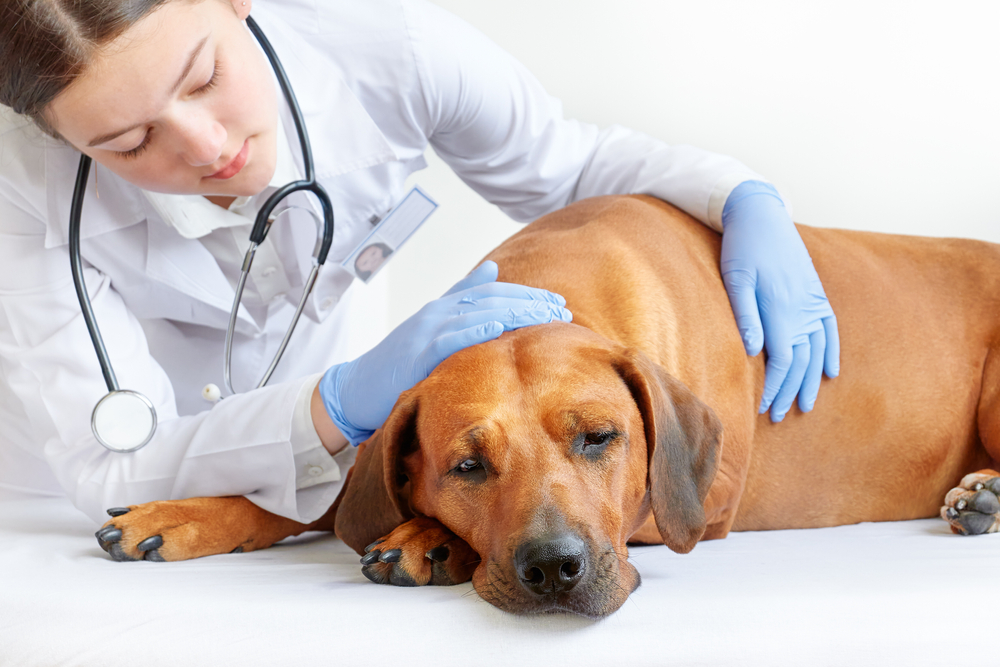
Precautions
This subject is not all doom and gloom, as veterinarians work very hard to mitigate the anesthetic risks for their patients.
- Pre-anesthetic evaluation: This includes a detailed history, full physical exam, and bloodwork to evaluate potential risks while determining internal organ function and various cell types. Based on these results, additional tests may be recommended. One example is that of chest radiographs and/or an electrocardiogram (ECG) to determine if there may be noted issues with the heart.
- Intravenous catheter: Not only is this a prompt way to deliver potential life-saving medications if needed, but it can also allow for intravenous fluids which have many added benefits during the procedure, such as helping to stabilize blood pressure.
- An anesthetic plan tailored to each individual patient: Certain drugs may or may not be used in specific amounts based on the dog’s age, weight, health, and overall exam and lab work findings.
- High level of anesthetic monitoring: Using specialized equipment and monitoring parameters such as those for body temperature, breathing and heart rates, blood pressure, blood oxygen and carbon dioxide levels, ECG to monitor the heart, etc. Along with the veterinarian, having a trained surgical veterinary technician or assistant also watching as well as recording and reacting to the above criteria can help to prevent or resolve problems in real time.
- Aftercare: Continuation of monitoring and providing additional care if needed until the patient is awake and stable from anesthesia. Some extra time may be needed for monitoring an older dog, as recovery after anesthesia may take longer.
- Other: Sometimes, additional measures may be taken for older pets, such as extra precautions with providing the correct degree of extra warmth, special positioning, and extra padding. These measures can help support those dogs who may have less padding or protective muscle mass.
- Listen to all veterinary instructions before and after the procedure to help decrease risk for your dog: For example, if they discuss how long to withhold food before the procedure, in this case, this is meant to help decrease the risk of anesthetic complications such as aspiration and pneumonia.
Frequently Asked Questions (FAQ)
What about anesthesia-free dental cleanings?
Some people may have heard of non-anesthetic dental cleanings that attempt to scale and polish a dog’s teeth while they are awake. It has been made clear by the American Veterinary Dental College (AVDC), American Veterinary Medical Association (AVMA), and American Animal Hospital Association (AAHA) that anesthesia-dental free cleanings are NOT recommended. This is for a variety of reasons including the lack of safety, efficacy, and ethics.
At best, non-anesthetic dentistry only allows for visible tartar above the gum line to be removed, which provides a false sense of security for true dental care. Remember, 60% of the tooth lies under the surface! This means that many other areas in the mouth cannot be evaluated, cleaned, and definitely not treated on an awake dog. Being awake during this is not safe for the dog (or the medical team) and can be extremely stressful and painful.
The full extent of dental disease cannot be determined or treated on an awake dog, no matter how friendly or cooperative they are, which is why anesthesia is imperative. This allows for a full and proper oral exam, scaling of the teeth above and below the gumline, as well as further treatment and prevention to take place. If you are concerned about anesthesia with your pet, a conversation with your veterinarian is key.
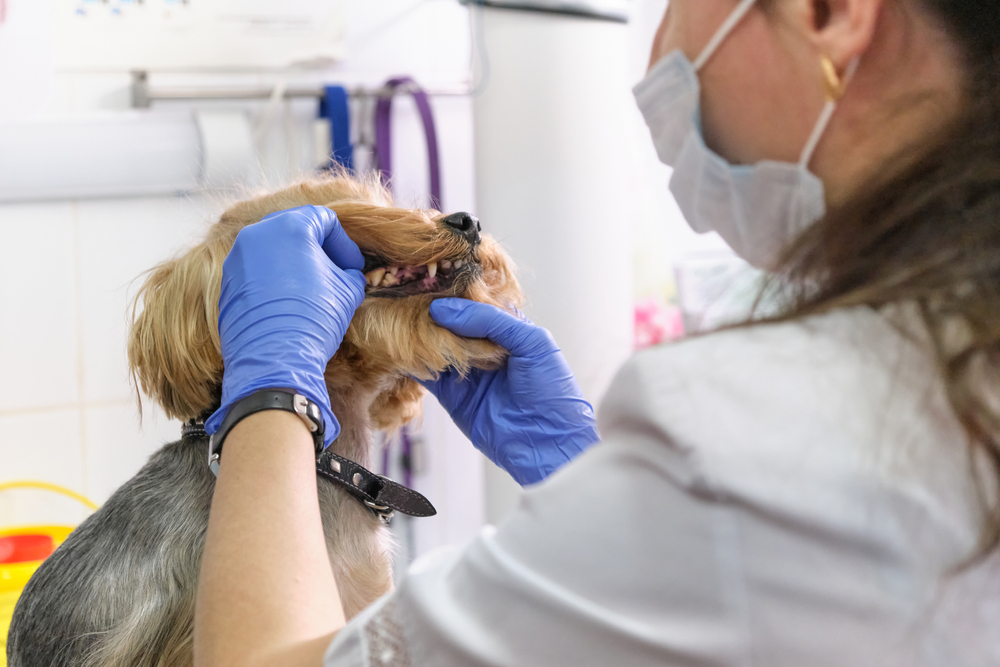
How old is an elderly dog?
The quick answer is that it depends. AAHA states that there is no set number of years to define senior dogs as there are differences in aging amongst various breeds. Rather, they say that a senior dog is in the last quarter of their expected life span for that breed.
Typically, larger and more giant breeds usually have a shorter lifespan than their small(er) counterparts. Generally speaking, a good rough guide for a senior dog is starting in the 6–9-year age range. With that, larger breeds would begin on the lower end of that range while smaller breeds begin on the upper end.
What can I do at home to prevent dental problems for my dog?
Overall, the best dental care for our dogs involves both regular veterinary professional cleanings under anesthesia coupled with routine at-home dental care. Ideally, the best chance to slow dental disease at home includes daily teeth brushing. Tips on how to work with your dog to get them accustomed to the process as well as discussing other additional dental supplement options may be discussed with your veterinarian. The VOHC (Veterinary Oral Health Council) is a great place to gather information as they review products with specific standards that help with your pet’s plaque and tartar control.
Oral care for our four-legged friends can be a large endeavor, but their health deserves your attention and help!

Conclusion
Undergoing anesthesia for dental work on older dogs can be a daunting topic for owners, but it can be done with a successful outcome. If you are concerned about anesthesia safety with your pet, a conversation with your veterinarian is crucial.
While there are many factors to weigh and consider, your veterinarian can help discuss the risks versus benefits as well as the precautions needed to best help your pooch receive the dental care they need.
Featured Image Credit: The Dog Photographer, Shutterstock

